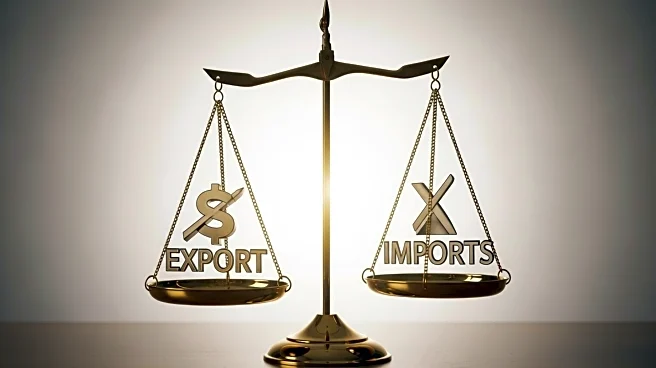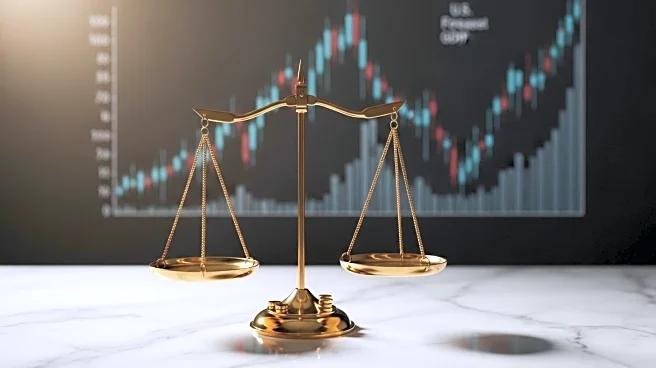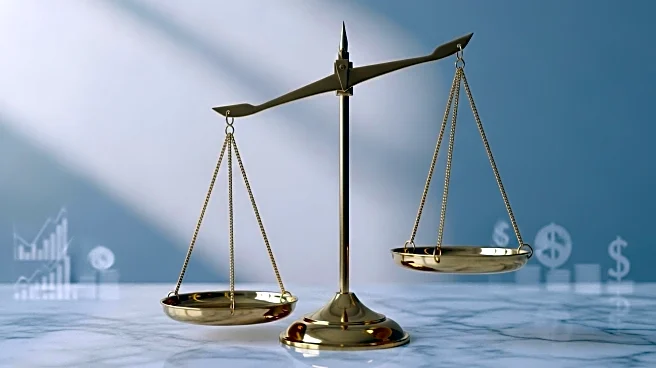What's Happening?
The U.S. economy experienced a significant growth rate of 3.8% in the second quarter, as reported by the Commerce Department. This marks a dramatic upgrade from the previous estimate of 3.3%. The growth was primarily driven by an increase in consumer spending and a sharp contraction in the trade deficit, as imports slowed following a surge in the first quarter. The rebound in GDP comes after a 0.6% decline in the first quarter, which was attributed to President Trump's trade policies and tariffs. The strong consumer spending and private investment contributed to the economy's resilience, despite ongoing trade uncertainties.
Why It's Important?
The revised GDP growth rate indicates a robust economic performance, which may influence the Federal Reserve's decision on interest rates. The strong growth suggests that further rate cuts may not be necessary, despite pressure from President Trump. The economy's resilience amidst trade policy uncertainties highlights the impact of consumer spending and business investment on economic stability. However, the slowdown in job growth due to tariffs and immigration policies remains a concern, potentially affecting long-term economic health. The data underscores the complex interplay between trade policies and economic performance.
What's Next?
The Commerce Department is set to release its initial estimate of third-quarter growth on October 30, with forecasters expecting a slowdown to an annual pace of 1.5%. The Federal Reserve's future actions regarding interest rates will be closely watched, as the strong second-quarter growth may reduce the likelihood of further cuts. The ongoing trade policy uncertainties and their impact on business investment and consumer spending will continue to be key factors in economic forecasts. Stakeholders will be monitoring these developments to assess the potential for sustained economic growth.
Beyond the Headlines
The economic growth figures reveal deeper implications of trade policies and tariffs on the U.S. economy. While tariffs aim to protect domestic industries, they can lead to increased costs and inefficiencies, affecting consumer prices and business operations. The unpredictable nature of tariff impositions has contributed to business uncertainty, impacting hiring and investment decisions. The broader economic narrative highlights the challenges of balancing protectionist policies with economic growth objectives.











